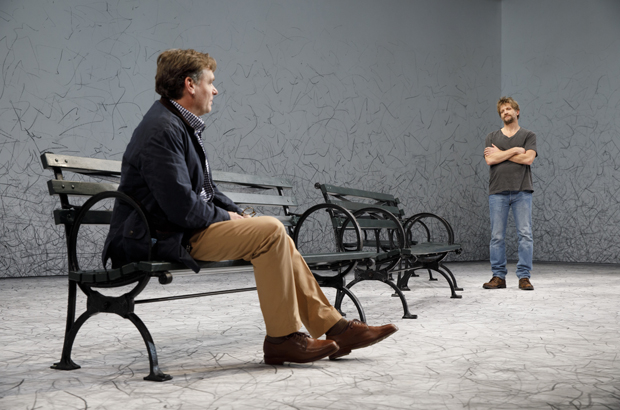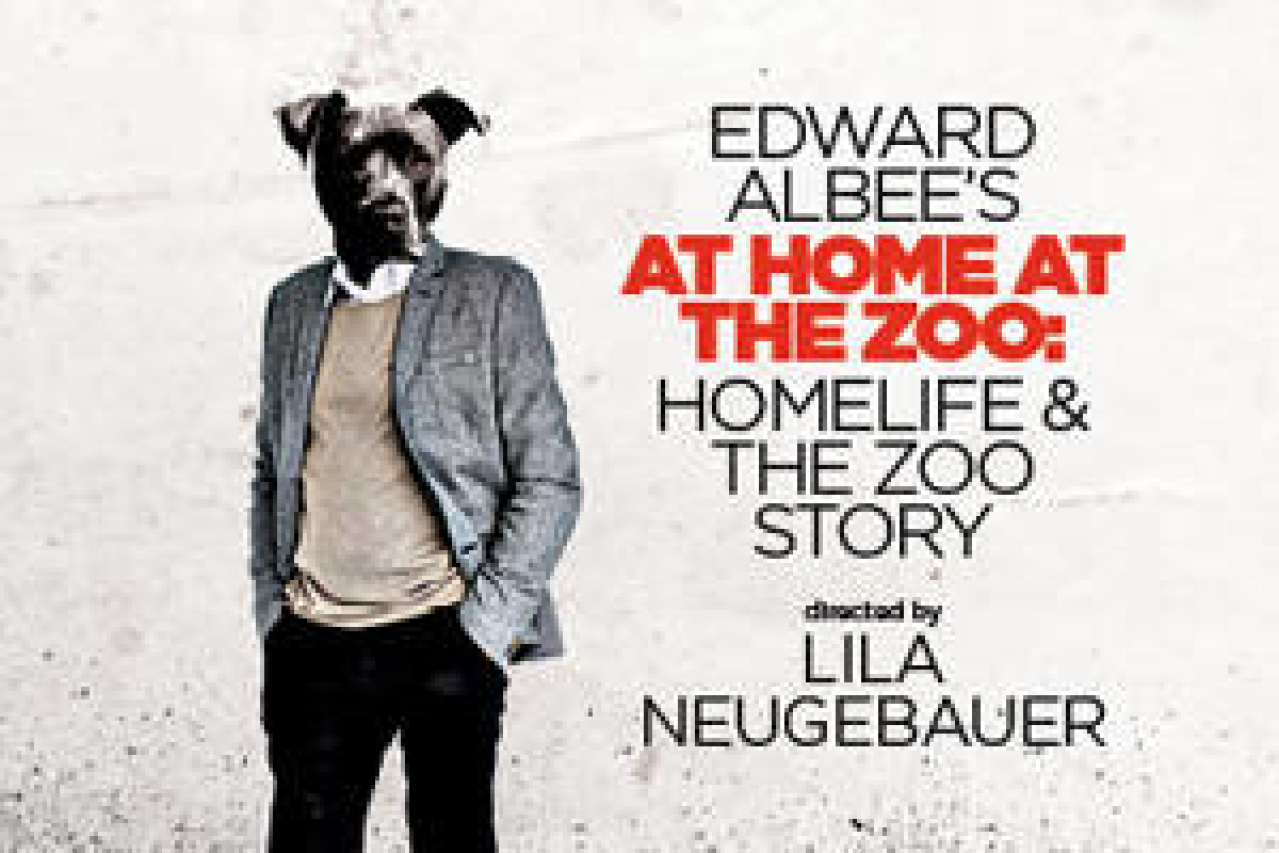Edward Albee Invites Americans to Feel At Home at the Zoo

(© Joan Marcus)
I almost got caught in the middle of a subway fight on my way to Signature Theatre to see the revival of Edward Albee’s At Home at the Zoo. A wealthier-looking woman stepped on the shoes of a more shabbily dressed man, and he immediately responded with a string of expletives. Violent threats poured out of him like water spilling over a dam. It seemed pretty clear that his rage was about something more than a scuffed shoe. In this city where we go through pains to maintain a polite segregation of the classes, the subway is one of the great egalitarian spaces. Another is Central Park, as Albee was surely aware when he chose it as the setting for his 1958 play, The Zoo Story.
That breakthrough one-act and its gut-punch depiction of class rage stood alone until 2004, when Albee wrote a prequel to illuminate the home life of Peter (Robert Sean Leonard), the wealthier of the two men in A Zoo Story. Appropriately called Homelife, that act takes place in Peter's apartment on Manhattan's Upper East Side and introduces us to his wife, Ann (Katie Finneran). She wants to talk, but her textbook publisher husband is deep in concentration reading what he describes as "the most important boring book we’ve ever done." But they do talk: about Ann's sexual dissatisfaction, Peter's shrinking anatomy, and a myriad of other problems conjured in the absence of real adversity.

(© Joan Marcus)
True danger comes in Act 2, when Peter relocates to Central Park to enjoy a tastefully austere Library of America tome. This time he is interrupted by Jerry (Paul Sparks), a scruffy man in ill-fitting jeans and a T-shirt (smartly suggestive costumes by Kaye Voyce). While sharing anecdotes about his unfortunate childhood and impoverished living conditions, he asks impertinent questions about Peter's income. Too polite to just walk away, Peter answers, "I make around two hundred thousand a year, but I don't carry more than forty dollars at any one time." Even if Peter's senator might describe him as "middle class," we in the audience know better: Compared to the vast majority of his fellow Americans, Peter is a rich man.
Director Lila Neugebauer conveys Peter and Ann's specific brand of unostentatious wealth with efficiency and clarity. Even though set designer Andrew Lieberman depicts their apartment as a mostly bare room with walls that look like they've been attacked by a crayon-wielding 4-year-old, Peter's comfortable green armchair and incandescent reading lamp (by Japhy Weideman) project an air of urbane comfort.
Leonard's soft, measured line deliveries also betray Peter's effortless privilege. He is someone who never raises his voice, because he doesn't have to. As Ann, Finneran introduces a nagging dissatisfaction to this picture of bourgeois bliss. Ennui radiates from her spectral figure as she interprets Albee's language with aching sincerity.
Sparks makes a thrillingly unpredictable Jerry, accenting his performance with birdlike eyes and pointed modulations in his voice. We understand why Peter sticks around as we hang on his every word. And yet even Sparks isn't able to fully activate Jerry's extended monologue about the dog that guards the ground floor of his Dickensian boarding house, a heavy-handed metaphor for the way the world works that is reminiscent of the worst impulses of Eugene O'Neill.

(© Joan Marcus)
Even if your mind drifts away during this short story masquerading as drama, you'll be jolted back to attention by the explosive final moments, which are expertly choreographed by UnkleDave's Fight-House, and performed with brutal realism by Leonard and Sparks.
Way back when our country was "great," Albee still knew that those at the top of the American food chain would one day have to choose between their gentility and their dominance. The near-brawl I witnessed on the 2 train is just one of thousands of instances of a long-suppressed anger bubbling to the surface. Now that class resentment has become one of the most potent forces in our national conversation, At Home at the Zoo serves as a prescient warning of things to come.











